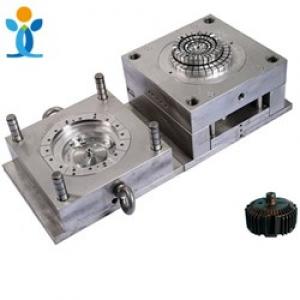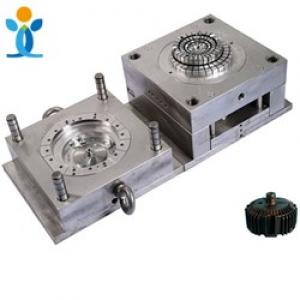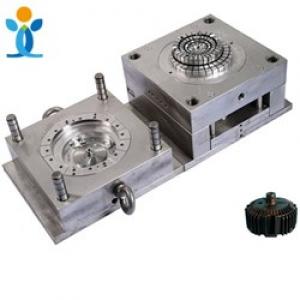TPR injection Process
TPR injection Process
1、 The barrel needs to be cleaned before injection molding
Before the newly purchased injection molding machine is used for the first time, or when the product needs to be changed, the raw materials need to be changed, the color needs to be changed, or the decomposition phenomenon in the plastic is found, the barrel of the injection molding machine needs to be cleaned or disassembled.
The cleaning machine barrel generally adopts the heating machine barrel cleaning method. Cleaning materials generally use plastic raw materials (or plastic recycled materials). For TPR materials, the transition cleaning material can be replaced with the processed new material.
2、 Forming temperature of TPR
In the process of injection molding, the accuracy of temperature setting is the key to the appearance and performance of products. The following are some suggestions for temperature setting during TPR processing and injection molding.
The temperature of the feed area should be set quite low to avoid blockage of the feed inlet and escape of entrained air. When the color masterbatch is used, in order to improve the mixing state, the temperature of the transition area should be set above the melting point of the color masterbatch. The temperature of the area closest to the injection nozzle should be set close to the desired melt temperature.
Therefore, after testing, the temperature setting range of TPR products in each area is: 160 ° C to 210 ° C for the barrel and 180 ° C to 230 ° C for the nozzle.
The mold temperature should be set higher than the condensation temperature in the injection molding area, which will avoid the pollution of water to the mold and the stripes on the product surface. Higher die temperature usually leads to a longer cycle, but it can improve the appearance of welding lines and products. Therefore, the range of die temperature should be designed between 30 and 40.
Three. Mold filling, pressure maintaining and cooling
In the process of molding and filling the mold cavity, if the filling performance of the product is not good, there will be too much pressure reduction, too long filling time, insufficient filling and so on, so that the product has quality problems. In order to improve the filling performance of products during molding and improve the quality of molded products, the following aspects can be considered generally:
Change another series of products of KeYue;
Change gate position;
Change the injection pressure;
Change the geometry of the part.
Generally, the control of injection pressure is divided into primary injection pressure, secondary injection pressure (pressure holding) or more than three injection pressures. Whether the pressure switching time is appropriate is very important to prevent excessive pressure in the die and overflow or shortage of material. The specific volume of molded products depends on the melt pressure and temperature when the gate is closed in the pressure maintaining stage.
If the pressure and temperature are the same every time from pressure holding to product cooling, the specific volume of the product will not change. At a constant molding temperature, the most important parameter to determine the product size is the holding pressure, and the most important variables affecting the product size tolerance are the holding pressure and temperature.
For example, after the mold filling is completed, the holding pressure decreases immediately. When the surface layer forms a certain thickness, the holding pressure rises again. In this way, large products with thick wall can be formed with low clamping force to eliminate pit collapse and flash.
The holding pressure and speed are usually 50% ~ 65% of the maximum pressure and speed when filling the mold cavity, that is, the holding pressure is about 0.6 ~ 0.8MPa lower than the injection pressure. Because the pressure holding pressure is lower than the injection pressure, the load of the oil pump is low within a considerable pressure holding time, the service life of the solid oil pump is prolonged, and the power consumption of the oil pump motor is also reduced.
A certain amount of metering is adjusted in advance so that there is still a small amount of melt (buffer) at the end of the screw near the end of the injection stroke. Further apply the injection pressure (secondary or tertiary injection pressure) according to the filling in the mold to supplement a little melt. In this way, the depression of the product can be prevented or the shrinkage of the product can be adjusted.
The cooling time mainly depends on the melt temperature, the wall thickness of the product and the cooling efficiency. In addition, the hardness of the material is also a factor. Compared with very soft varieties, hard varieties will solidify faster in the mold.
If cooling is carried out from both sides, the cooling time required for every 0.100 'wall thickness will usually be about 10 to 15 seconds. Coated products will require a longer cooling time because they can be cooled effectively through a smaller surface area. The cooling time required for every 0.100 'wall thickness will be approximately 15 to 25 seconds.
4、 Influence of injection molding process conditions
1. Incomplete plastic molding
(1) Improper feed adjustment, lack of material or excessive material.
(2) The injection pressure is too low, the injection time is short, and the plunger or screw returns too early.
(3) Slow injection speed.
(4) The feed temperature is too low.
2. Overflow (flash)
(1) The injection pressure is too high or the injection speed is too fast.
(2) Flash caused by excessive feeding.
(3) Too high barrel, nozzle temperature or mold temperature will reduce the plastic viscosity and increase the fluidity, resulting in flash in the case of smooth mold entry.
3. Crazing, bubbles and pores
(1) The material temperature is too high, causing decomposition.
(2) The injection pressure is small and the pressure holding time is short, so that the melt is not close to the surface of the cavity.
(3) If the injection speed is too fast, the molten plastic will decompose under the action of large shear and produce decomposition gas; The injection speed is too slow to fill the cavity in time, resulting in insufficient surface density and crazing.
(4) Insufficient material quantity, too large feeding buffer pad, too low material temperature or too low mold temperature will affect the flow and forming pressure of molten material and produce bubbles.
(5) When the screw is pre molded, the back pressure is too low and the rotating speed is too high, which makes the screw return too fast, and the air is easy to be pushed to the front end of the barrel together with the material.
4. Scorched dark lines
(1) The temperature of barrel and nozzle is too high.
(2) Injection pressure or prepreg back pressure is too high.
(3) The injection speed is too fast or the injection cycle is too long.



